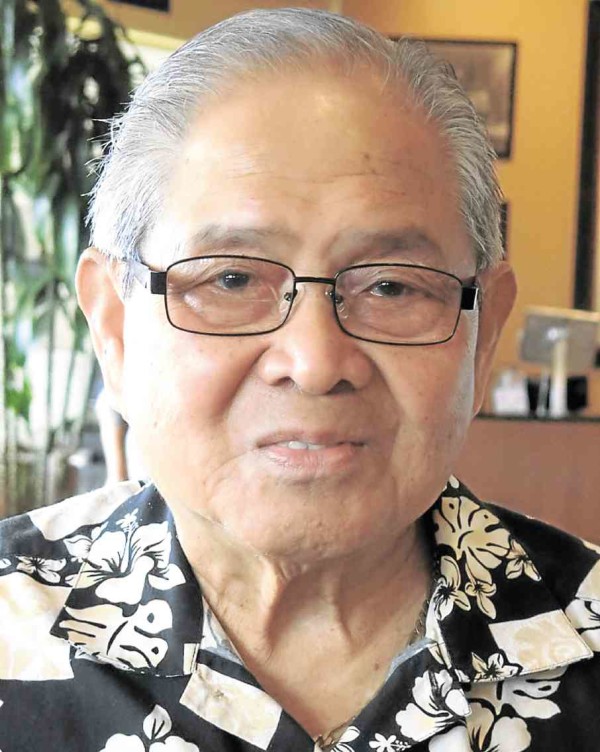LOS ANGELES—For over a year now, we’ve been corresponding with 80-year-old film editor Joven Calub for the CCP Encyclopedia Film Volume. We finally met him last Sept. 12 to discuss his stints at Premiere Productions and MGM. He is the first Filipino member of the Motion Picture Editors Guild.
He was mentored by his father, pioneering film editor Victoriano “Vic” Calub. The young Calub was credited as editor of Ramon Estella’s “Ang Buhay at Pag-ibig ni Rizal” (1956), Pablo Santiago’s “Los Lacuacheros” (1957), Efren Reyes’ “Sa Ngalan ng Espada” (1958), Pablo Santiago’s “Ang Lo’ Waist Gang at si Og sa Mindoro” (1958), Larry Santiago’s “Yaya Maria” (1958), where Calub was nominated for a Famas, Pablo Santiago’s “Sumpa at Pangako” (1959), Gerardo de Leon’s “Noli Me Tangere” (1961), Eddie Romero’s “Lost Battalion” (1962), Monte Hellman’s “Flight to Fury” (1964), produced by Eddie Romero starring Jack Nicholson and Joseph “Erap” Estrada, Eddie Romero’s “Moro Witch Doctor” (1964), Gerardo de Leon and Eddie Romero’s “Intramuros: The Walls of Hell” (1964) and Romero’s “The Ravagers” (1965).
He recalls, “When I was editing in the Philippines, the Americans came. There was a director-editor, Edward Mann, whom I became close friends with. He made me his assistant. His family owned the Mann theaters. He had clout.
“I was an accounting graduate, and I got accepted as a junior accountant. But, I received a telegram from MGM—double na agad ang sweldo ko! The film industry here pays well.
“At MGM, I was an editor, but didn’t get any credit as one of the editors of the TV series, ‘Chips.’ I also did a Western feature and was also not credited.”
What are his memories making local films? He recalls, “I got close to ‘Tarzan’ star, Jock Mahoney, when he worked in the Philippines. He was doing a routine with Paquito Diaz but didn’t want to use a double because there was no one who had the same height, 6’4’-6’5”—so, he broke his back and was paralyzed!”
How was the “Lo’ Waist Gang” series created? “It was pitched inside Premiere Productions’ cafeteria. Every afternoon, we would hang out and drink beer. It was Tony Cruz’s concept.”
He thinks highly of National Artist Eddie Romero: “He was one of the most intelligent persons I’ve ever met. My friendship with him went back a long way. After ‘Yaya Maria,’ he got me to work in American productions in the late 1950s and early ’60s.”
Who was his favorite director? He grins, “Cesar “Chat” Gallardo. We were friends. Chat listened to my suggestions. Gerry was different. After I edited a film, he went through it and made corrections. With Eddie, nagtutugma kung anong gusto naming dalawa. In editing, pacing is important to bring out the ‘correct’ reaction.”


